How much money are you prepared to spend to win, to achieve your dreams, your goals?
In sports, if your goal is to win the America’s Cup, the oldest sporting trophy still being contested and arguably the hardest competition to win, perhaps that answer might be over $100M. In Formula 1 motor racing, current budgets are capped at $175M per year, not including driver’s salaries. In business, here in the US it is estimated that VC funds invested $75 billion in startups in the second quarter of 2021.
What if spending money wasn’t enough?
What if you made these investments, spent the money, and you still didn’t achieve your goal?
It turns out that achieving many great, worthwhile goals, requires a lot more than money, it requires a group of people, working together cohesively, effectively pooling their skills and capabilities, and combining them to create something more than the sum of the parts. In other words, a high-performing team.
In my experience being a part of high performing teams in the America’s Cup and Volvo Ocean Races, money was a complicating issue. Being well-funded allowed the campaign to go buy the best talent they could find, to get the very best money can buy on your team. But as I experienced, getting the very best athletes, designers, builders and researchers on your team and putting them in a room together didn’t mean they would work cohesively. Sometimes it was magical and we achieved incredible goals, like completely dominating grueling Round the World yacht races, other times it was a long, hard grind that ended in failure. Literal failure too, like boats breaking in half and sinking beneath the waves!
Building a High-Performing Team
With so much on the line, what can be done to build a high performing team to achieve your goals?
Twenty years ago Jim Collins wrote Good to Great, pulling together years of research on businesses that had produced lasting value that greatly exceeded the stock market.
One of the central traits Collins found was a concept he called “First Who, Then What”. He saw successful teams got the right people on the bus first, then figured out where to drive it. It is a concept often seen in VC investing where the leadership team is the target of investment rather than the final product or service, as that is highly likely to change during the search for product/market fit.
Who, exactly, are the right people to get on the bus?
In The Entrepreneurial Operating System (EOS), we operationalize Collins’ Right People concept by taking a values first approach, and one of the best teams I ever worked with did this innately. In a values first approach, the team’s founders define what they want the culture of the team to be, then go about finding people who have values that fit that culture. That team built their crew in a very intentional way, person by person, making sure each new addition matched the core values of the team and was going to be a great fit. The result was a dominating win sailing around the world, they were a joy to support and sail with.
Functioning cohesively and effectively
So, once in the room, how do you get a team to function together?
In the best high performing teams I worked with, everything just seemed to click. People knew their roles and the politics took a back seat as the team focused on achieving their stellar results.
This ability to get past unproductive issues and focus on results was the subject of research from Patrick Lencioni and described in the seminal book: The Five Dysfunctions of a Team. Lencioni saw common dysfunctions getting in the way of the team being able to achieve their results: lack of trust, toxic conflict, no commitment to decisions, lack of accountability and inattention to results because politics and personal fiefdoms ruled the day. For me, I can still see pictures imprinted in my mind of a racing yacht we had designed with the hull collapsed and folded in two due to a structural failure, resulting from a failure of trust on the team where the engineers were not consulted over a change made to the structure.
It starts with trust
Lencioni’s antidote is to start by building trust. Members of great teams trust one another on a fundamental, emotional level, and they are comfortable being vulnerable with each other about their weaknesses, mistakes, fears, and behaviors. They get to a point where they can be completely open with one another, without filters. This is essential because teams that trust one another are not afraid to engage in passionate dialogue around issues and decisions that are key to the team’s success.
Building this trust in high performing teams has been of intense interest to many companies, and Google in particular has put effort into figuring out what works for them. In Project Aristotle, Google surveyed 180 high performing teams and found the best exhibited five defining characteristics. The number #1 defining characteristic is Psychological Safety.
In a team with high psychological safety, teammates feel safe to take risks around their team members. They feel confident that no one on the team will embarrass or punish anyone else for admitting a mistake, asking a question, or offering a new idea. I have experienced being on teams with low psychological safety, and I know how it feels to bottle up my ideas, to not ask questions, to lean back and say nothing, to feel shut down. It’s not a great feeling, and it leads to massive underperformance of the team.
Creating an environment of psychological safety
As leaders, how do we create an environment of psychological safety so we can get the best out of the team?
It starts with the leader, and the leadership ability of that person to create the right environment for the team to excel. When the leader creates a safe environment, then the team can rise to the occasion, people speak up, raise their hand, or lean in with vulnerability to ask a question. The results I have experienced are a team that had each other’s backs, who knew what their roles were, and whose energy was freed up to look up and out of the boat to bring strategic and tactical information back into the team, so they could focus on their results.
The power of focusing on results
In 2011 the McLaren racing team boasted of some of the most advanced technology in the world, but they had a problem: their pit stops were taking too much time. When a Formula 1 car comes into a pit stop, it must slow down from over 200 mph, to 70 mph to enter the pit lane, then come to a complete stop to change tires. All this was happening in 4.5 seconds, which was astounding as it was, but their competition was doing it faster, so they had to figure out how to improve. With cars racing around the track at 200 mph, a two second performance gain from a faster pit stop means being 600ft further ahead, a huge margin.
So the performance analysts looked at what happens in a pit stop, and they saw there was a pit crew member responsible for removing the wheel nut from the wheel in front of them so the tire could be changed, and then fastening the tire back on. The performance analysis showed that if the race car did not stop right on its designated marks, then the pit crew, who are on their knees, had to relocate position to get at the wheel, which all cost time. Furthermore, if the pit crew’s gaze was wandering and they weren’t paying attention and already in motion as the car came to rest, then they lost precious more time getting focused.
The analysis resulted in working with the race car drivers to get them to bring their car from moving at 300 feet per second, to stopping exactly on a set mark, and to training the pit crew as athletes, so they were undivided in their attention and fully focused on the wheel in front of them. With this work, McLaren got their pit stops down to two seconds from 4.5 seconds. Yes, that’s 2 seconds to change 4 tires.
That’s the power of building a high performing team that focuses on results, and the good news is that with EOS, I teach you a complete proven system consisting of a simple set of practical tools that have been used successfully in 12,000 businesses to elevate execution and get the results you want.



